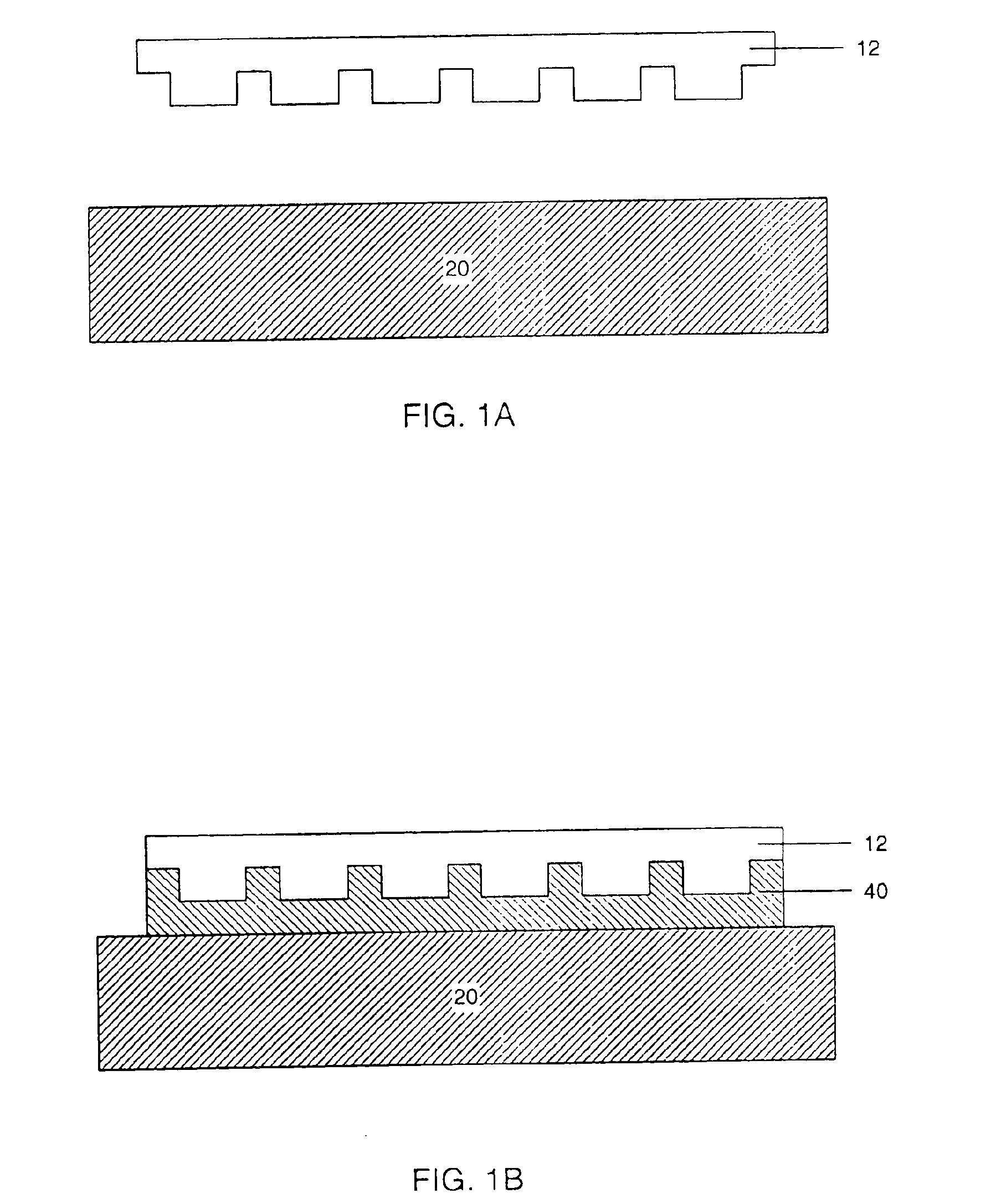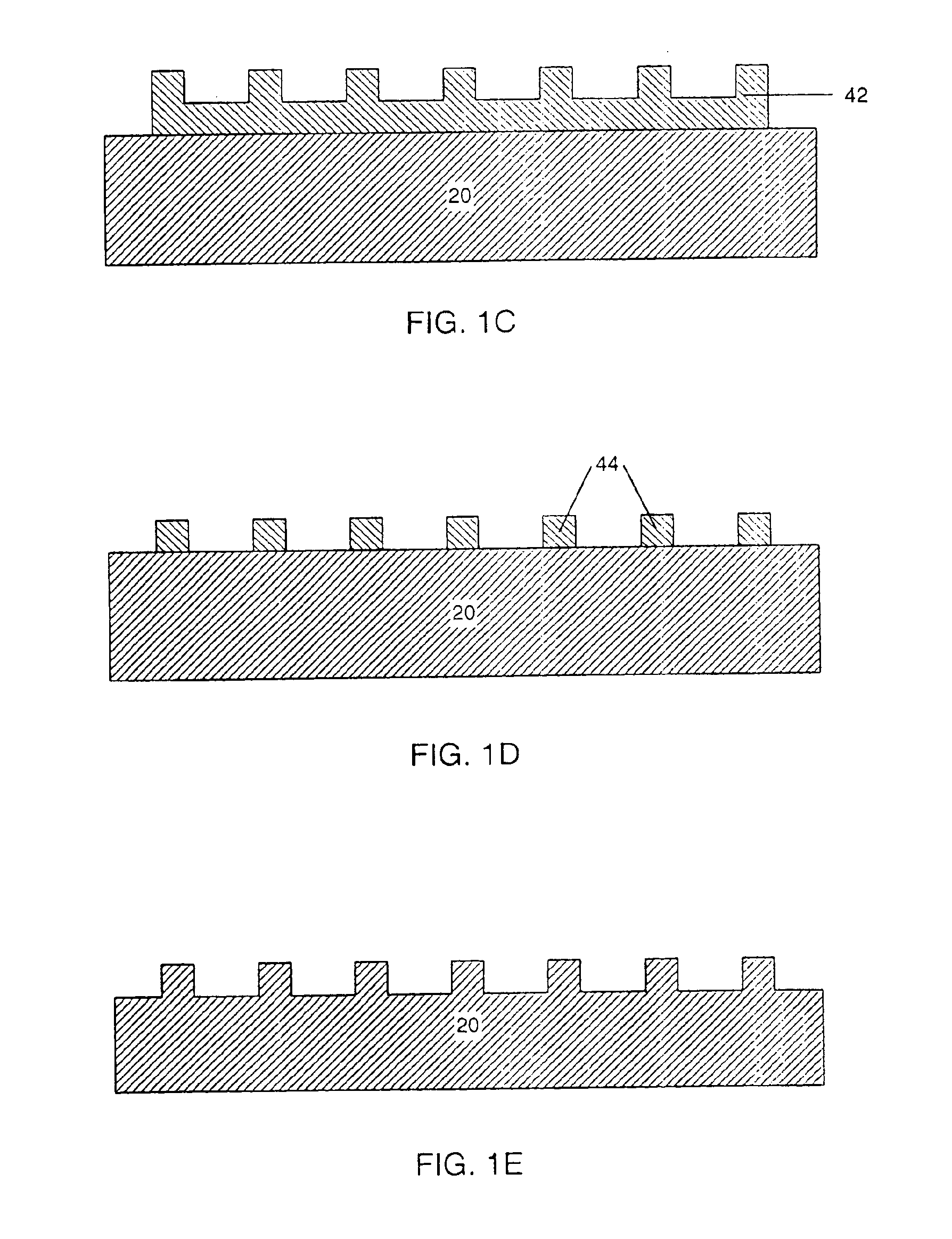Methods of inspecting a lithography template
a template and template technology, applied in the field of lithography templates, can solve the problems of wet etching process, undercutting problem, difficult etching of opaque materials, etc., and achieve the effects of improving inspectionability, low defect density, and reducing the difficulty of etching
- Summary
- Abstract
- Description
- Claims
- Application Information
AI Technical Summary
Benefits of technology
Problems solved by technology
Method used
Image
Examples
Embodiment Construction
[0026]In general, a method of forming a pattern on a substrate may be accomplished by the use of imprint lithography processes. A typical imprint lithography process includes applying a curable liquid to a substrate, placing a patterned template in contact with the curable liquid, curing the liquid, and removing the template. The pattern of the template is imparted to the cured material disposed on the substrate.
[0027]A typical imprint lithography process is shown in FIGS. 1A through 1E. As depicted in FIG. 1A, template 12 is positioned in a spaced relation to the substrate 20 such that a gap is formed between template 12 and substrate 20. Template 12 may include a surface fabricated to take on the shape of desired features, which in turn, may be transferred to the substrate 20. As used herein, a “feature size” generally refers to a width, length and / or depth of one of the desired features. Surface of template 12 may be treated with a thin layer that lowers the template surface ener...
PUM
| Property | Measurement | Unit |
|---|---|---|
| size | aaaaa | aaaaa |
| thickness | aaaaa | aaaaa |
| thickness | aaaaa | aaaaa |
Abstract
Description
Claims
Application Information
 Login to View More
Login to View More - R&D
- Intellectual Property
- Life Sciences
- Materials
- Tech Scout
- Unparalleled Data Quality
- Higher Quality Content
- 60% Fewer Hallucinations
Browse by: Latest US Patents, China's latest patents, Technical Efficacy Thesaurus, Application Domain, Technology Topic, Popular Technical Reports.
© 2025 PatSnap. All rights reserved.Legal|Privacy policy|Modern Slavery Act Transparency Statement|Sitemap|About US| Contact US: help@patsnap.com



